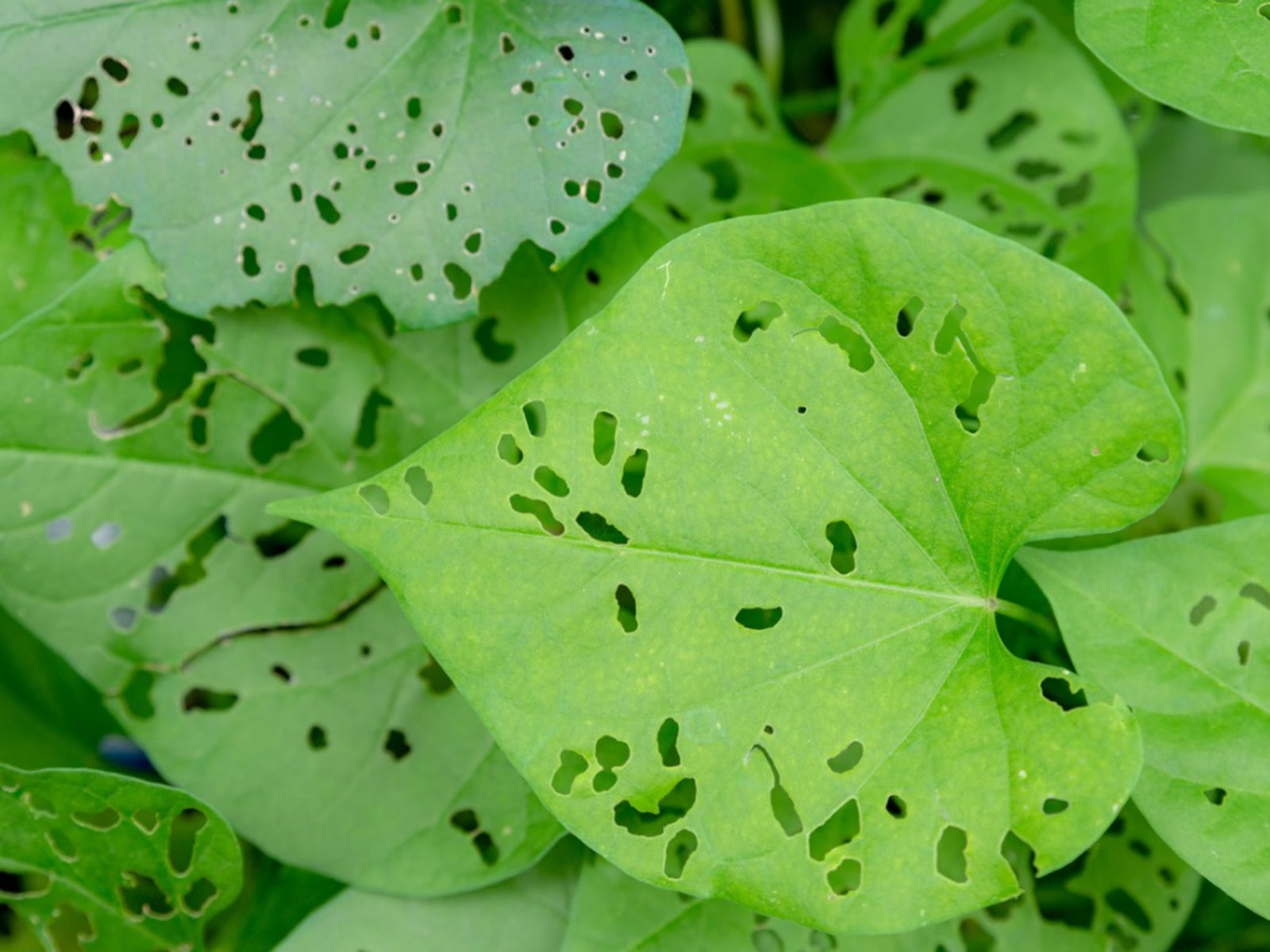The Enigmatic Holes in Your plant‘s Leaves: A Deep Dive
The sight of holes marring the once pristine leaves of your beloved houseplants or garden specimens can be alarming. These perforations, ranging from small pinpricks to large, irregular gaps, are a common affliction, signaling a variety of potential issues. Understanding the causes behind these holes is crucial for effective diagnosis and treatment, ensuring the health and vitality of your green companions. This comprehensive guide will explore the myriad reasons why your plant’s leaves might be sporting these unwelcome blemishes.
1. The Usual Suspects: Pests and Their Feeding Habits
The most frequent culprits behind holes in leaves are, without a doubt, pests. These tiny invaders often possess specialized mouthparts designed to pierce, chew, or suck plant tissues, leaving behind telltale signs of their presence.

1.1 Chewing Insects: The Leaf Munchers
Caterpillars: These larval stages of moths and butterflies are voracious eaters, capable of defoliating plants with astonishing speed. They leave behind irregular, often ragged holes, and you might spot them directly on the leaves or stems.
1.2 Sucking Insects: The Sap Drainers
Aphids: These tiny insects pierce plant tissues and suck sap, causing distorted growth and sometimes small holes or yellowing.

2. Environmental Factors: The Unseen Stressors
While pests are often the primary suspects, environmental factors can also contribute to the development of holes in leaves.
2.1 Physical Damage: The Accidental Wounds
Hail: Hailstorms can inflict significant damage, tearing leaves and creating irregular holes.
2.2 Nutritional Deficiencies: The Internal Imbalances
Potassium Deficiency: A lack of potassium can weaken plant tissues, making them more susceptible to damage and creating spots that can turn into holes.
2.3 Water Stress: The Hydration Havoc
Overwatering: Excess water can lead to root rot, hindering nutrient uptake and weakening the plant, making it more vulnerable to pests and diseases.
2.4 Sunburn: The Scorching Effects
3. Diseases: The Microbial Menace
Certain plant diseases can also manifest as holes in leaves.
3.1 Fungal Diseases: The Spore Spreaders
Leaf Spot Diseases: Various fungal pathogens can cause leaf spot diseases, characterized by circular or irregular spots that can eventually fall out, leaving holes.
3.2 Bacterial Diseases: The Microscopic Invaders
4. Natural Leaf Fenestration: The Intentional Holes
In some cases, holes in leaves are not a sign of distress but rather a natural characteristic of the plant.
4.1 Monstera Deliciosa: The Swiss Cheese Plant
4.2 Other Plants with Natural Holes
5. Identifying the Culprit: The Diagnostic Process
To effectively address the issue of holes in your plant’s leaves, you need to accurately identify the cause.
5.1 Inspecting the Plant: The Detective Work
Examine the Holes: Note the size, shape, and distribution of the holes.
5.2 Using a Magnifying Glass: The Closer Look
5.3 Taking Photos: The Visual Record
6. Treatment and Prevention: The Restorative Actions
Once you have identified the cause of the holes, you can take appropriate steps to address the issue.
6.1 Pest Control: The Eradication Strategies
Handpicking: For larger pests like caterpillars or slugs, handpicking can be effective.
6.2 Disease Control: The Remedial Measures
Fungicides or Bactericides: Depending on the disease, fungicides or bactericides may be necessary.
6.3 Environmental Adjustments: The Corrective Actions
Watering Properly: Ensure that you are watering your plants appropriately, avoiding both overwatering and underwatering.
6.4 Prevention: The Proactive Approach
Regular Inspections: Regularly inspect your plants for signs of pests or diseases.
By understanding the various causes of holes in plant leaves and taking appropriate action, you can help your plants thrive and maintain their vibrant beauty.
